Tracey Warr's Blog, page 8
May 3, 2023
Unpacking Books
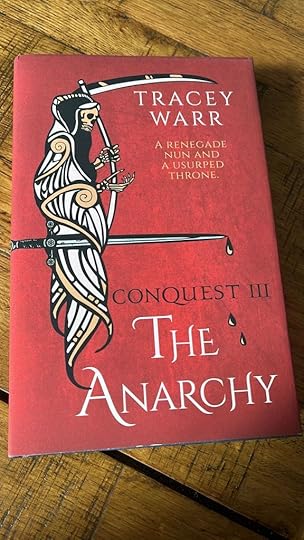
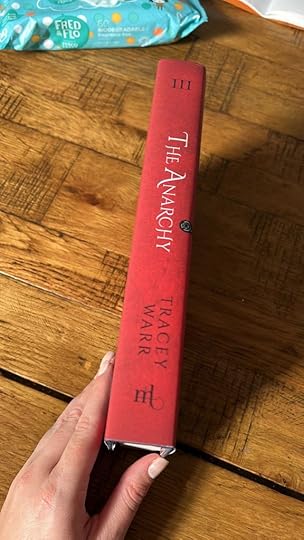
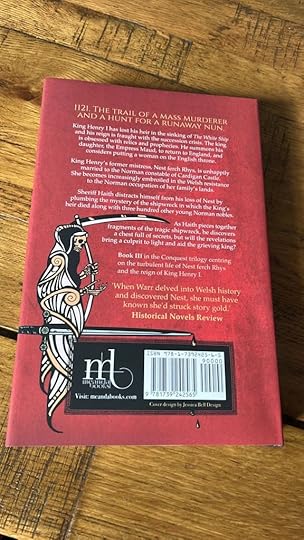
Unpacking the latest batch of books. Since last November, I have been working on reissuing my five historical novels under my own imprint, Meanda Books.
Daughter of the Last King, The Drowned Court and The Anarchy – my trilogy on medieval Wales are all available now in hardback, paperback and ebook.
Coming next, The Viking Hostage, available now on preorder. This standalone novel is based on the true story of a French noblewoman who was kidnapped from a French monastery by Vikings and held for ransom for three years. (Wales and Ireland also feature in this novel.)
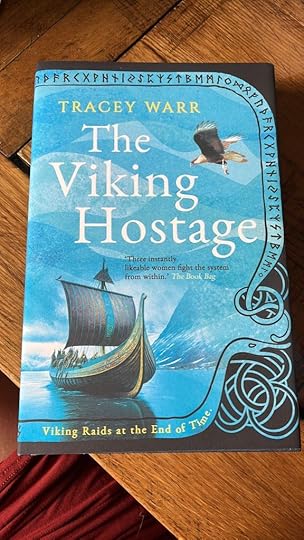
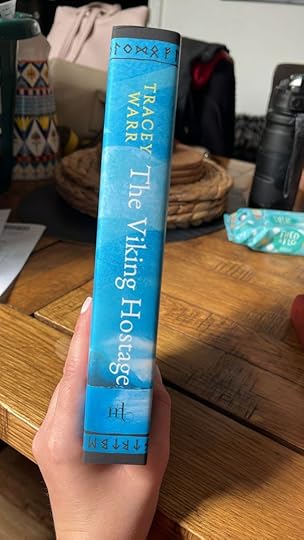
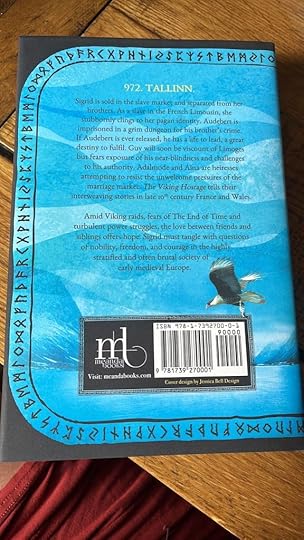
April 30, 2023
Happy May Day
Happy May Day!
The Anarchy, the final book in my medieval Wales trilogy, is published today. The novel deals with the 12th century succession crisis after King Henry I lost his only legitimate male heir in a shipwreck and tried to make his daughter, Empress Maud, his successor. It also covers the Welsh uprising against the Normans in 1136 and the extraordinary Welsh warrior queen, Gwenllian ferch Gruffudd ap Cynan.
Buy the book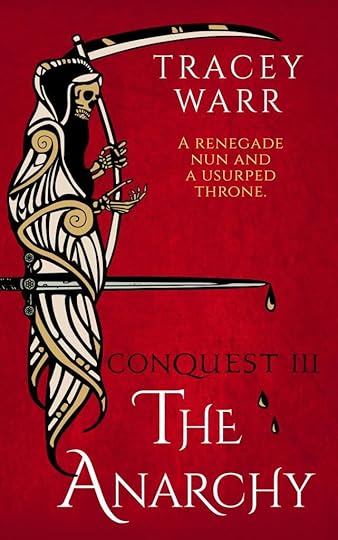
Cherry Blossoms, thanks to CupcakePerson13, CC BY-SA 4.0 <https://creativecommons.org/licenses/by-sa/4.0>, via Wikimedia Commons
April 29, 2023
Untangling Nest ferch Rhys
In the 12th century, the Welsh noblewoman, Nest ferch Rhys, was married to the Norman steward of Pembroke Castle, Gerald FitzWalter. One dark night, soon after Christmas, the Welsh prince of the neighbouring kingdom of Powys, Owain ap Cadwgan, broke into the castle where Nest, Gerald, their children and household were sleeping. Owain was accompanied by fourteen Welsh warriors and may have tunnelled under the gates to gain access.
Nest urged Gerald to escape down the castle toilet chute. Owain violated Nest and abducted her along with the couple’s four small children. Many aspects of the kidnap are uncertain – the date, the place (either Cilgerran Castle or Carew Castle), and Nest’s role. Was this a violent rape or did Nest collude and willingly cooperate with the abduction, as some historians claimed, dubbing her ‘Helen of Wales’?
My post discussing these questions is published today on The Writing Desk.
My trilogy on Nest ferch Rhys has just been reissued with new covers by Jessica Bell Design. The final book in the trilogy, The Anarchy, is published on Monday 1 May.

Cover image: No image of Nest ferch Rhys exists. The cover image shows Dante Gabriel Rossetti’s Helen of Troy (Public domain, via Wikimedia Commons).
If you want to delve into some of the sources for the kidnap, you can find them here.
untangling-nest-ferch-rhys-sources-1DownloadApril 28, 2023
Browsing for Books
Over ten years ago, I stumbled across Meg Bogin’s book, The Female Troubadours, in the library of University of Wales Trinity Saint David’s where I was studying for an MA in Creative Writing. I was working on my first novel at the time, based on the real woman, Almodis de La Marche, the countess of Toulouse and Barcelona. The monk chronicler, William of Malmesbury, accused Almodis of having ‘a godless female itch’ because she had a succession of three husbands and she was excommunicated by the pope. The new edition of my novel, Almodis the Peaceweaver, is published in July and I will be revealing the new cover here soon.
Browsing in the library and finding Meg Bogin’s book was important for the novel’s development. I created a female troubadour, Dia, who became a key character in Almodis the Peaceweaver. Over a decade later, another fictional female troubadour (trobairitz in Occitan), Beatriz, is the protagonist of a new series I am writing, set in the court of Philippa of Toulouse (Almodis’ granddaughter) who ruled Toulouse for a period and was married to Guillaume IX, Duke of Aquitaine, the troubadour duke. The Occitan University, an event that takes place each year in Laguepie in France where I live, have just invited me to organise an evening on the trobairitz in this year’s event in July. More on that coming soon.
Shepherd.com invited me to select my favourite books on a theme of my choice. Here is my bookshelf.
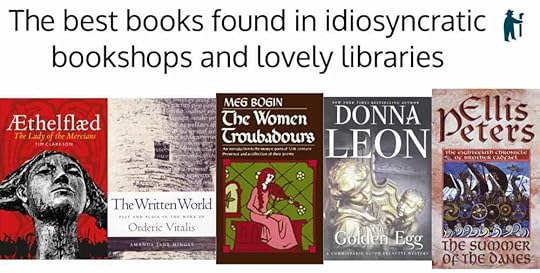
There is a serendipity and a synergy in what can be found through browsing as opposed to purposeful searching. Idiosyncratic bookshops and lovely libraries bring unexpected twists to my research and writing. Read what I have to say about the books and the places I found them.
April 24, 2023
Publication Day – The Drowned Court
It’s publication day for The Drowned Court, the second book in my Conquest trilogy about Nest ferch Rhys and King Henry I, set in the early 12th century.
See Meanda Books for more information.
April 17, 2023
Idiosyncratic Bookshops and Lovely Libraries
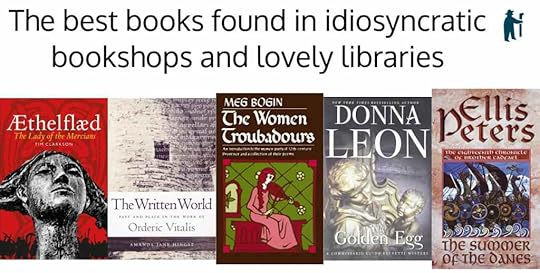
My bookshelf (above) has been published today on Shepherd.com, which is creating new and unique ways for readers to find amazing books. In this bookshelf post I write about the serendipity and synergy in what can be found through browsing (as opposed to purposeful searching). Idiosyncratic bookshops and lovely libraries bring unexpected twists to my research and writing.
Read what I have to say about the books above:
https://shepherd.com/best-books/in-idiosyncratic-bookshops-and-lovely-libraries
and the places I found them, which include Raven Bookshop in Cambridge, Massachusetts; Shakespeare & Company Bookshop in Paris; Animal Kitchen Bookshop in Narberth, Wales (now, sadly departed); The British Library; and the Festilitt second-hand bookstall in Parisot, France. I also mention Victoria Bookshop in Haverfordwest, Wales.
Title Image: interior of Shakespeare and Company Bookshop, gadl, CC BY-SA 2.0 <https://creativecommons.org/licenses/by-sa/2.0>, via Wikimedia Commons.
April 13, 2023
Interview with Elizabeth Chadwick
Elizabeth Chadwick’s new historical novel, The King’s Jewel, launches today. The publication of any new book by Elizabeth Chadwick is eagerly awaited by her many avid readers. I was especially keen to interview her about this novel since it centres on medieval Wales and Nesta ferch Rhys and Gerald of Windsor.
This interview is the first in a new series of guest interviews and posts on traceywarrwriting.com with writers who are focusing on the medieval period.

Elizabeth Chadwick is a multi-award winning historical novelist with twenty-nine novels in print, which have been translated into eighteen languages. The Greatest Knight was a New York Times bestseller and optioned for film and TV. The Scarlet Lion was one of the top ten novels of the decade for Richard Lee, the founder of the Historical Novel Society. Her Eleanor of Aquitaine trilogy is an international bestseller. She occasionally lectures on the academic circuit and is a member of the Royal Historical Society. The medieval period is her home, but she loves history and historical fiction across the ages.
What first drew you to the story of Nesta ferch Rhys?
It’s been a long time in the mulling. I first considered writing about Nesta getting on for thirty years ago when reading Giraldus Cambrensis (Gerald of Wales), who was, of course, Nesta ferch Rhys and Gerald of Windsor’s grandson.
A frequent visitor to Wales, I love Pembrokeshire and Manorbier – the castle on the beach, where Gerald of Wales was born. Gerald’s work was frequently on my desk as I wrote about the Marshals and the Angevins and I often wondered about his grandparents. Visiting Wales when my son was at university there, and also while researching the Marshal family who have their own story at Pembroke and Cilgerran and other strongholds, I continued to think about earlier generations. While writing The Irish Princess, one of the major secondary characters was Raymond le Gros, another grandson of Nesta ferch Rhys and Gerald of Windsor.
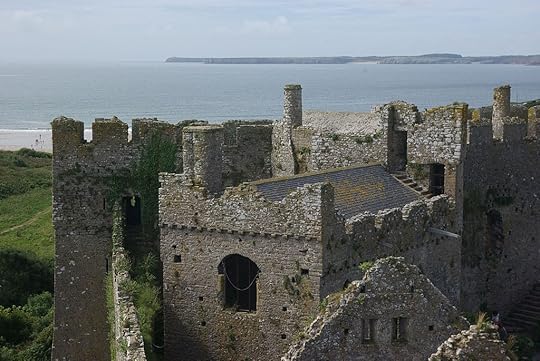 Manorbier Castle, Pembrokeshire, Wales
Manorbier Castle, Pembrokeshire, WalesI should add that this isn’t just a book about Nesta, but about Gerald of Windsor too. I was keen to explore his character and his life story and how he came from being a younger son of the constable of Windsor Castle, to a position as constable of Pembroke and husband to a Welsh princess. Once I begin exploring characters, I start asking questions, and the answers lead me to more questions and a desire to get to know these people on a more intimate level. The bottom line is that Nesta and Gerald had been a long time on my list, and suddenly the moment was right.
This isn’t your first book set in Wales. The King’s Jewel begins at Carew and moves to Pembroke, which were Welsh forts belonging to Nesta’s father before they became Norman castles. How did you develop the settings for the story?
I read up on the geography and history of the area. I had a good working general knowledge from earlier novels, but now I began to deepen that awareness. I knew there were set key scenes that would happen at certain places, and I set out to find what those places would have looked like in the 11th and 12th century and how they would have functioned. I am also a regular visitor to those areas of Wales both in a professional and tourist capacity.
What were your key research sources and what surprised you in the research?
The research sources would take several pages to name, but generally speaking, I read secondary sources from reputable academic presses such as The University of Wales, and many primary sources in translation – the Brut y Twysogion for example and the Legal Triads. Also two recent biographies of Nesta. I didn’t always agree with the latter, but they gave me food for thought.
Online resources were useful too, but as always, one has to take them with a pinch of salt and watch out for agendas. Once I began deepening the research, I was surprised at how much the Welsh actually fought among each other for dominance and how the Normans were very quick to take advantage of those shifting allegiances. I had known it happened but hadn’t quite realised with how much intensity. It really was dog eat dog.
I was also fascinated to find out more about Welsh horse breeding and how the Welsh princes had their own strong traditions when it came to fine horses – to the point where the Irish were buying Welsh horses to improve their own stock. Horses play a big part in The King’s Jewel and exploring that strand was very interesting.
Could you talk about how you developed your characters: Nesta, King Henry, Gerald FitzWalter, Owain ap Cadwgan, Arnulf de Montgomery?
To develop my characters, I read everything I could find about them – sometimes as in Nesta and Gerald’s cases – it was bare bones with an awful lot of assumption on the part of secondary sources, but even the latter gave me things to ponder. I asked questions and dug under the surface. For example, Gerald of Windsor was a younger son of the constable of Windsor Castle, which would have given him access to decent military training and the manners of the court. He was left in charge down in South Wales, following the Montgomery raids in 1093, so he must have been competent, cunning, intelligent, and trustworthy – as proven by Pembroke Castle’s ability, with him as commander, to withstand a siege in 1096. With the likes of Henry I, there was plenty to go at in the sources. I then began digging deeper and looking at the most likely scenarios from my point of view. Then asking ‘How would this person have behaved in that scenario given what we do know?
The other angle I used is more unconventional – the psychic angle. I have a close friend with the ability to look back into the past and see it like a film but in full sensory detail, including people’s emotions. My website has an article on the subject. This would not be admissable in conventional history, but in a work of fiction, it’s another thread gilding the braid being woven. I use it in tandem with the known history and my writer’s imagination and the triple thread works very well. It helps me to think outside the box and to get a strong understanding of my characters.
I also use modern music to get at my characters. All my novels have soundtracks. If a song is right for a character or a scene or just as an overview, it creates a sunburst in my solar plexus that tells me I’m on the right path. With Nesta and Owain, for example, the relationship between them, for me, was Rhianna and Eminem’s Love the Way You Lie – obsessive, destructive, but searingly hot.
Who is your favourite character? And did you have a minor character who surprised or delighted you?
I don’t know that I did have a favourite. I felt that Nesta had been badly treated by history and that she needed her story telling with a different nuance other than through the prism of Henry I’s accomplished concubine. The same feeling struck me with Gerald, who is often a footnote but must have been competent and pragmatic to cope with his Welsh life with Nesta. Between them, they raised some tough and amazing offspring.
Of the minor characters, I enjoyed two of my own invention. Ifor, Gerald’s Welsh scout, who was sold into slavery by the men of Powys, which is one of the reasons he scouts for the Normans now, and Dewi, Nesta’s father’s groom, a man dedicated to the Carew warhorses first and foremost, but also devoted to Nesta. I found out a lot by exploring their imagined backstories for the novel.
The primary accounts leave it ambiguous whether Nesta was willing and colluded or was raped in her relationships with King Henry and with Owain ap Cadwgan. How did you tackle the question of Nesta’s victimhood or agency?
I asked myself what the most likely scenario was and once I’d decided on that course, it flowed easily. Naturally it’s a personal decision, but my reading of the sources (and the psychic aspect) showed me where I wanted to go with the narrative and what felt right for the people involved.
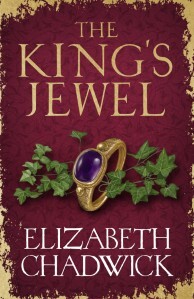
It can be a challenge for a historical novelist to untangle a story from the myths and contradictions that have grown up around historical characters. Some sources describe Nesta as Helen of Wales. I recently saw her listed among ‘Hussies of History’. How do you find the measure of your characters amidst conflicting accounts?
I think the answer is to read as much as possible about the period, not just about the people involved, but the period itself in order to get closer to the mindsets. It helps too, to understand human psychology – and the psychology of generations long gone. Technology changes, society changes, but we are still hard-wired the same way.
Was Nesta a hussy? That seems to me to be utterly ridiculous and isn’t a path I have taken. A survivor, certainly, but ask survivors whose families have been ripped apart and members murdered, how they cope on a daily basis, and ask it of those who are forced to live with the enemy and deal with the enemy every day and smile. When accounts are conflicting, I take the scenario that feels right to me both at gut level and what I know from reading extensively – and of course the thread of the psychic aspect.
What are you working on next?
At the moment, I’m awaiting the finishing touches on my new three book deal with my publishers LittleBrown, so I can’t say, but it is set in the Medieval period.
A huge thank you to Elizabeth Chadwick for this fascinating look behind the scenes of writing her new book, The King’s Jewel, which is published today. I particularly enjoyed the surprise of Rhianna and Eminem’s song as the soundtrack for writing the novel!
Image Credits:
Title Image: Tower, Manorbier Castle by N Chadwick, CC BY-SA 2.0 <https://creativecommons.org/licenses/by-sa/2.0>, via Wikimedia Commons
Above: Manorbier Castle by Stephen McKay, CC BY-SA 2.0 <https://creativecommons.org/licenses/by-sa/2.0>, via Wikimedia Commons
April 7, 2023
Spring is sprung
Spring is arriving at last in southern France where I am copyediting my novel, The Viking Hostage.
I was delighted to revisit this quotation from Freda White’s Three Rivers of France:
‘the spring in Aquitaine comes flying from the west in a swirl of flowers, with summer hard on its heels, pursuing it by the rivers and catching up with it on the ridges’.
I put the quotation into the mouth of one of my characters in the novel.
I wrote The Viking Hostage nine years ago, sitting in this same house in France. It has been out of print for a couple of years. I’m delighted to be reissuing it as a new edition with Meanda Books. It is published on 20 June and available to preorder now. (Hardback and paperback preorders coming soon.)
March 16, 2023
Cover Reveal – The Viking Hostage
I am very excited to reveal the new cover for The Viking Hostage, which has been designed by Jessica Bell.
The Viking Hostage was an Amazon bestseller in Australia on its first publication, back in 2014, and has been out of print for two years. I am especially excited, therefore, to welcome it back to your bookshelves and e-readers with this vibrant new cover.
The book will be published in hardback, paperback and ebook on 20 June. The ebook can be preordered now, and hardback and paperback preorders are coming soon.
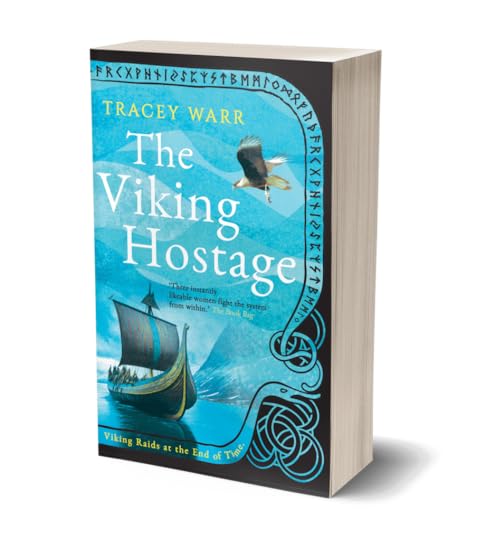
A Viking raid and an unwanted marriage.
972. Tallinn. Sigrid, a Norwegian girl, is sold in the slave market and separated from her brothers. As a slave in the French Limousin, she stubbornly clings to her pagan identity. Audebert is imprisoned in a grim dungeon for his brother’s crime. If Audebert is ever released, he has a life to lead, a great destiny to fulfil. Guy will soon be viscount of Limoges but fears exposure of his near-blindness and a challenge to his authority. Adalmode and Aina are great heiresses attempting to resist the unwelcome pressures of the marriage market. Their stories tangle with questions of nobility, freedom, friendship and courage in the highly stratified and often brutal society of early medieval Europe. Amid Viking raids, fears of The End of Time and turbulent power struggles, The Viking Hostage tells these interweaving stories in late 10th century France and Wales.
‘Three instantly likeable women fight the system from within.’ The Book Bag
March 12, 2023
Guest post on medieval Wales
Thank you to Tony Riches for hosting my guest post on the Turbulent Life of Nest Ferch Rhys, her relationship with King Henry I, and how she lived through the Norman conquest of Wales. Nest is the heroine of my Conquest trilogy. The first book, Daughter of the Last King, has just been reissued and books 2 and 3 are coming in April and May and can be preordered now.

Main image shows Cilgerran Castle, which may be where Nest was kidnapped by the Welsh prince, Owain ap Cadwagn. Or Carew Castle, below, may have been the site where she was abducted and her Norman husband, Gerald FitzWalter, escaped down the toilet chute to the moat.
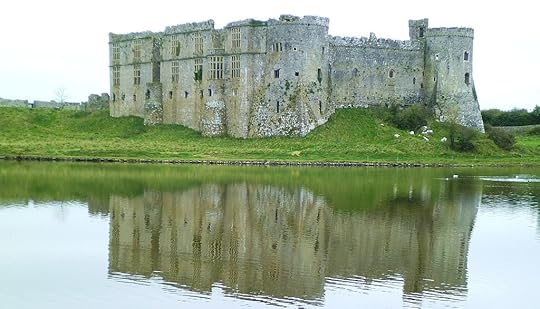
My new book covers are designed by Jessica Bell.
Cilgerran Castle. Waterborough, CC BY-SA 3.0 <http://creativecommons.org/licenses/by-sa/3.0/>, via Wikimedia Commons.
Carew Castle by Gordon Hatton, CC BY-SA 2.0 <https://creativecommons.org/licenses/by-sa/2.0>, via Wikimedia Commons.



